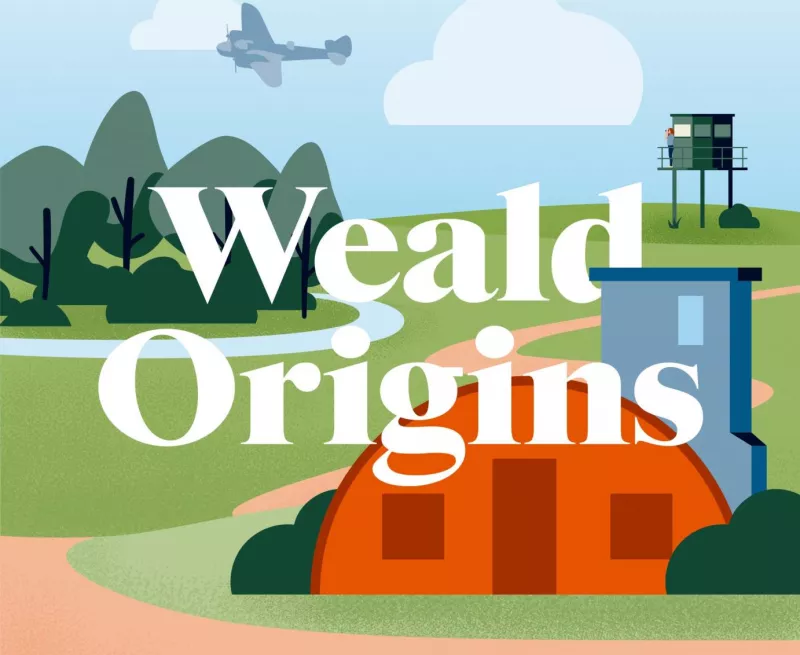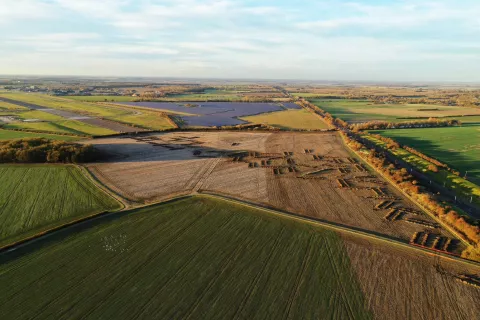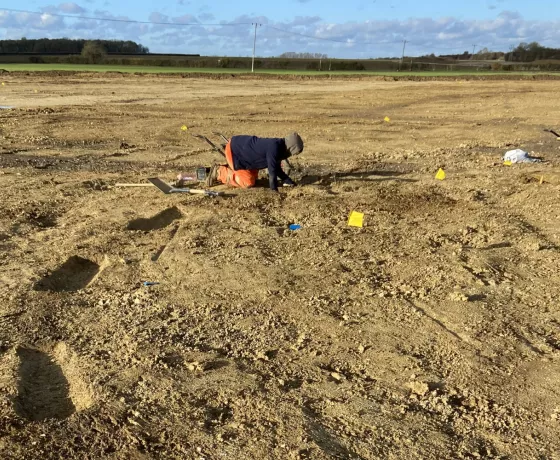Grange Farm is surrounded by a large number of archaeological sites. These include the route of the Roman road of Ermine Street and nearby Roman settlements and burial monuments. Earlier prehistoric sites are present, and the area has important medieval remains including the nationally important remains of a moated enclosure at Prestley Wood.
The Cambridge office of Oxford Archaeology have been investigating the archaeology of the former Alconbury Airfield and the surrounding area for over twenty years, revealing archaeological remains spanning the Middle Bronze Age to post-Medieval periods.
You can learn more about the rich heritage of the area in Alconbury Weald Stories, a podcast series from Urban&Civic exploring the narratives emerging from this special place. The second episode, narrated by Raksha Dave, is called ‘Weald Origins’ and features interviews with OA's archaeologists.

Meet the Team
Andy graduated from the University of York in 2007 with a BA in Archaeology. He joined Oxford Archaeology in 2012, and currently serves as a Senior Project Manager. He is a Member of the Chartered Institute for Archaeologists (MCIfA).
In his current role, Andy oversees excavations on site, and also coordinates post-excavation work and reporting. As a Project Officer he directed a wide range of fieldwork projects including significant excavations of a large high status Iron Age settlement at Cressing, Braintree and part of a Roman roadside settlement in Bishop’s Stortford along with medieval and post-medieval excavations in Huntingdon, Norwich and Cambridge.
Nick graduated from the University of Bradford in 2008 with a BSc in Archaeology and has since worked for a number of archaeological units in the south and east of England. He joined OA East in 2011, and has subsequently worked on a broad range of sites and periods throughout East Anglia, including the Great Fen Spitfire project. His current role involves directing excavation on site and writing reports in the post-excavation phase, recent work has included large excavations of Iron Age and Roman activity in Essex and large and small evaluations throughout Cambridgeshire.
Clemency develops and supports all educational and community work across Oxford Archaeology involving volunteers, educational institutions and the general public. She is a member of the company-wide Communications Team and promotes wellbeing at work initiatives as a Mental Health First Aider. She has worked in archaeological outreach since 2010 and has a MSc in Landscape Archaeology from the University of Oxford.
Browse the Blog
Project client




